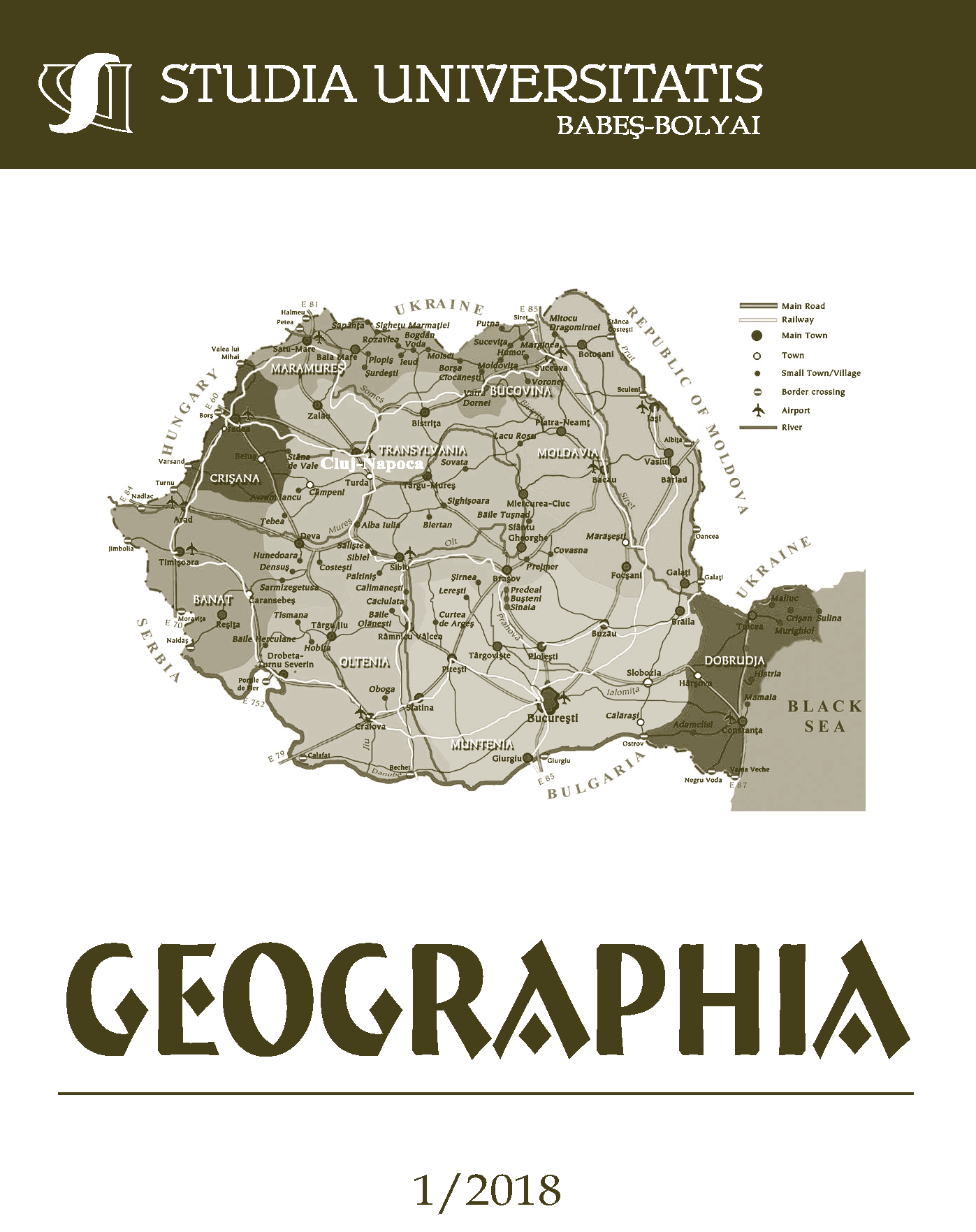SCĂRIȘOARA ICE CAVE GEOMORPHOSITE – EVALUATION AND TOURIST CAPITALIZATION
DOI:
https://doi.org/10.24193/subbgeogr.2018.1.06Keywords:
geomorphosite, Scărișoara Ice Cave, tourist potential, capitalization, Pralong Method.Abstract
The present study assesses the attractiveness potential of karst forms which exist in Bihor Mountains, focusing on Scărișoara Ice Cave. This cave is considered by researchers as one of the most important tourist attractions in Romania, due to the accumulation of qualitative and quantitative factors, which contribute to its inclusion in the category of geomorphosites. In the scientific literature, the notion of “geomorphosite” refers to a landform or a geomorphological process which possesses multiple scientific, cultural, economic, scenic, historical and aesthetic values. All these values are the result of the researcher’s subjective perception, acquired over time. The better known these values are, the more tourists are interested in the landform. This research was accomplished by applying specific research methods, which were acknowledged both at national and international level. The findings of the research highlight the special scenic value of the landform analyzed, as well as its high tourist attractiveness.References
Bruschi, Viola Maria, Cendrero, A. (2005), Geosite Evaluation: Can We Measure Intangible Values? Il II Quaternario, Geomorphological Sites an Geodiversity, Vol. 18(1), p.293-306.
Cocean, Gabriela (2011), Munții Trascăului. Relief, geomorfosituri, turism. Editura Presa Universitară Clujeană, Cluj-Napoca.
Cocean, P. (2010), Patrimoniul turistic al României, Presa Universitară Clujeană.
Comănescu, L., Dobre, R. (2009), Inventoring, Evaluating and Tourism Valuating the Geomorphosites from the Central Sector of the Ceahlău National Park, GeoJurnal of Tourism and Geosites Year II, no. I., Vol. 3, Pag. 86-96.
Coratza, Paola, Giusti, Cecilia (2005), Methodological Proposal for the Assessment of the Scientific Quality of Geomorphosites.Il II Quaternario, Geomorphological Sites an Geodiversity, Vol. 18(1), 2005, p.307-314.
Crișan, H.F., Irimuș, I.-A., Peteley, A., Balint-Balint, L., Cioban, T.D., Dombay, Șt. (2016), Tourism capitalization on geomorphosistems Karst in Surduc-Munticelu. Book Group Author(s): Ecology, Economics, Education and Legislation Conference Proceedings, SGEM 2016, VOL I Book Series: International Multidisciplinary Scientific GeoConference-SGEM Pages: 771-777. Published: 2016. Accession Number: WOS: 000391519100103.
Grandgirard, V. (1995) Methode pour la realisation d’un inventaire de geotopes geo-morphologiques, În Cahiers de I’Institut de Geographie de I’Universite de Fribourg, 10, pg. 121-137.
Irimuş, I.-A., Bálint-Bálint, L., Dombay, St., Crişan, H.F., Magyari-Saska, Zs. (2015), Classification and Evaluation Criteria for Volcanic Geomorphosites in Harghita Mountains, SGEM: Science and Technologies in Geology, Exploration and Mining, vol. I, International Multidisciplinary Scientific GeoConference-SGEM, p. 77-84.
Irimuş, I.-A, Irimia, D.N (2014), The rupestrian places of Alunişu – possibly tourist geomorphological sites. Studia Universitatis Babeș-Bolyai, Geographia, vol.60 (LX), no.1, p.27-36, Edit. Cluj University Press.
Irimuş, I.-A, Irimia, D.N. (2012), The Impact of Natural Hazards over Tourist capitalization of Geomorphological Sites from Buzau Subcarpathians, Riscuri şi Catastrofe, Edit. Casa Cărţii de Ştiinţă, Cluj-Napoca, XI, vol. 11, no.2, p.84-92.
Irimuş, I.-A., Toma, Bianca (2012), The Promotion of Geomorphosites on Salt from Sovata-Praid and Turda Using Cultural-Scientific Tourism. Rev. de Geomorfologie, vol.14, p.103-113 / ISSN 1453-5068. (SGEM). Accession Number: WOS:000371662300010.
Muntele, I., Iațu, C. (2006), Geografia turismului – concepte, metode și forme de manifestare spațio-temporală, ed. a II-a, Ed. Sedcom Libris, Iași.
Racoviță, E. (1927), Observations sur la glacière naturelle dite ,,Ghețarul de la Scărișoara”, Edit. Institutul de Arte Grafice ,,Ardealul”.
Racoviță, G., Șerban, M., Viehmann, I., Onac, B.P. (2003), Peștera Ghețarul de la Scărișoara. Studiu monografic. ed. a II-a, Edit. Presa Universitară Clujeană, Cluj-Napoca
Pralong, J.P. (2005), A Method for Assessing the Tourist Potential and Use of Geomorphological Sites, Geomorphologie. Relief, processus, environnement 3, p.189-196.
Pușcariu, V. (1934), Ghețarul de la Scărișoara și împrejurimile lui, Edit. Cartea Românească.
Downloads
Published
How to Cite
Issue
Section
License
Copyright (c) 2018 Studia Universitatis Babeș-Bolyai Geographia

This work is licensed under a Creative Commons Attribution-NonCommercial-NoDerivatives 4.0 International License.





 ©Studia Universitatis Babeş-Bolyai Geographia. Published by Babeș-Bolyai University.
©Studia Universitatis Babeş-Bolyai Geographia. Published by Babeș-Bolyai University.